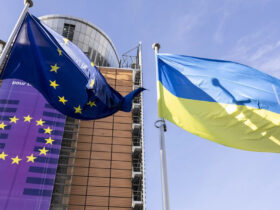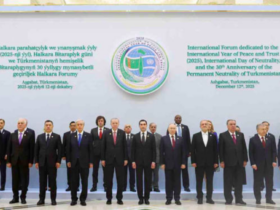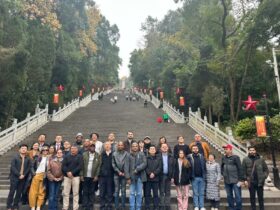Last week we took a “trip” through the de-dollarization process that we characterize as inevitable. Today we will continue the analysis trying to reach some conclusions while considering that it is still not clear what will be the alternative to the dollar as the main currency. Several options are available.
One of them will emanate from the decision taken by the BRICS at their summit meeting in South Africa during the month of August. In this regard, the governor of the Reserve Bank of that country, Lesetja Kganyago said that any discussion aimed at establishing a commonly used currency will lead to another debate, which is the creation and location of a central bank. The South African expressed uncertainty about the matter, saying that he did not know how to speak “of a currency issued by a block of countries that are in different geographical locations, because the currencies are national in nature.”
However, what is certain is that at the Summit, the member countries of the conglomerate will discuss – as a priority item on the agenda – the necessary measures to protect the New Development Bank of the group (NDB) against the hegemony of the dollar. Within this framework, Brazil has proposed establishing mechanisms for protection of financial transactions within the bloc to avoid “abuse of the dollar” according to the foreign minister of that country, Mauro Vieira.
For his part, Sergei Lavrov, Foreign Minister of Russia, argued that since de-dollarization has already begun, it was necessary to develop other initiatives to shape the process. In the case of his country, he explained that it had been forced to “respond firmly, in principle and consistently to the war that was declared on us.”
Within the framework of this debate, the President of South Africa, Cyril Ramaphosa supported the proposal of his Brazilian counterpart, Lula da Silva, on the need to create “new currencies to trade.”
Giving continuity to the review that we did in the previous article on concrete measures that have been taken to open way to the de-dollarization process, it is important to highlight the announcement of the Russian Finance Minister Anton Siluanov , who reported that more than 70% of trade deals between Russia and China now use the ruble or yuan. In the same way, the oil trade between Russia and India in rupees has been started. An agreement was also signed between Russia and Bangladesh for the construction of the Rooppur nuclear power plant, financed outside of the dollar. The first payment of 300 million dollars will be in yuan, but Russia will try to exchange these into rubles.
Even in the West the process has begun. China National Offshore Oil Company Corporation (CNOOC) and France’s Total signed their first yuan-denominated LNG deal through the Shanghai Oil and Natural Gas Exchange.
In Latin America there have also been some positive signs in the course of de-dollarization. For example, a few weeks ago Brazilian bank Bocom BBM became the first Latin American bank to register as a direct participant of the Cross-Border Interbank Payment System (CIPS), which is the Chinese alternative to the Western-led financial messaging system, SWIFT. Likewise, in recent days it was agreed that the bilateral trade of Russia and Bolivia now accept settlements in Bolivian pesos. This is essential at a time when the Russian company Rosatom is going to begin to play a decisive role in the development of lithium deposits in Bolivia.
It is worth mentioning that at the recent Mercosur summit held in Puerto Iguazú, Argentina on July 4, Bolivia raised the need to reduce dependence on the dollar, diversify economic relations and strengthen commercial and financial ties between countries with the purpose of fostering domestic investment and promote cooperation on monetary policy. Bolivian President Luis Arce argued that “reducing dependence on the dollar, through greater integration and regional cooperation, implies changing the conditions of exchange that until now only favor the northern country.” For this reason, he proposed strengthening commercial and financial ties between countries, including the strengthening of currencies at the regional level, the promotion of internal investment and the promotion of cooperation in the field of monetary and financial policy, in addition to seeking strategic alliances with other actors. international markets, such as China, that offer alternatives to the dollar in trade and investment.
In a broader view of the matter, the Bolivian president stated that: “We cannot ignore the emergence of a Eurasian and Asian bloc in the analysis of this world in transition that, organized in the BRICS and other integration mechanisms, are projected as spaces construction of a new world economic order.
For their part, in Asia the finance ministers and central bank governors of the Association of Southeast Asian Nations (ASEAN) after their meeting on March 30 and 31 in Indonesia also decided to reduce their dependence on the US dollar. To this end, they agreed to “strengthen financial resilience […] through the use of local currencies to support cross-border trade and investment”.
With similar logic during the recent Summit of the Shanghai Cooperation Organization (SCO), Chinese President Xi Jinping considered it appropriate to increase the percentage of payments in national currencies within the organization. It is worth saying that the relationship that Xi made of this matter with others on the international agenda is extremely important when he referred to the responsibility of the SCO to deal with “color revolutions” and the interference of foreign powers in affairs of the countries of the region.
In that regard, the Chinese leader proposed to the bloc countries to increase their payments in national currencies, urging them to counteract unilateral economic sanctions, hegemonism and power politics. The president also launched an appeal in favor of “cooperating instead of competing”, establishing his country’s commitment to collaborate to achieve global security. Xi clearly linked the issue of de-dollarization with that of global security and sovereignty, giving this issue a strategic character.
From Russia’s perspective, the materialization of this initiative requires the establishment of an alternative to the system of SWIFT financial messaging exchange. In this sense, the president of the board of directors of the Russian bank VTB – one of the largest in that country – Andrei Kostin, proposed to the Central Bank of Russia the creation of a new banking system for the Global South with the aim of reducing dependency of international regulation. Kostin felt that the time had come for a deeper transformation because it was not enough for each country to deal with the problem individually. He considered that it was necessary “to undertake a fundamental reform to build a new system of international payments and the necessary infrastructure for a world capital market.”
To operationalize the decision, the head of the VTB established a road map that includes four points: The first would be to establish an alternative to SWIFT, since most of the large Russian banks were disconnected in the framework of Western sanctions. Although Russia, China and India have their own financial messaging systems, they are neither united nor cohesive.
In the second point, it is proposed to replace the current US banking correspondents to establish an interconnection between the banks that join the association through new technologies, such as the chain of blocks (blockhain ).
In the same way, it is essential to look for new tools to attract capital, avoiding that from coming from the European Union, as is currently the case. Likewise, a parallel infrastructure must be built that is not located in the West, which generates an extreme weakness for financial resources that can be subject to sanctions and blockades.
Finally, in order to prevent the effect of the sanctions, Kostin suggested establishing an international “hub” in a country in the Persian Gulf that functions as an alternative for depositary settlement, taking advantage of the fact that this region “has a large concentration of capital.”
However, this process cannot be seen as a technical issue. It’s importance is given by the political and geopolitical implications it generates. Basically, it is an expression of the crisis of American hegemony that began in the penultimate decade of the 19th century or, if we see it in a broader perspective, we could speak of the crisis of hegemony in the Anglosphere that began in 1763 after the English victory over France in the Seven Years’ War and consolidated in 1815 after the Napoleonic defeat at Waterloo.
However, it must be said that we are only in the early stages of the process. Although in sharp decline from a strategic point of view in military matters vis-à-vis Russia and China, the United States still retains a powerful military force and a cultural-media apparatus that favors its hegemony. Still, as the Argentine sociologist Gabriel Merino says, “the 10% decline in the last ten years of the dollar as a reserve currency and as a means of global payment show a process that will probably deepen in the coming years.”
Merino adds that conditions are being created for the development of a “multi-monetary or currency block” scenario. His argument is based on the fact that the use of the dollar as a weapon of economic warfare accelerates this process. Janet Yellen herself, Secretary of the Treasury of the United States, has said that: “The economic sanctions imposed by the United States, in particular on Russia, pose a ‘risk’ to the hegemony of the dollar, for which the affected countries are looking for alternatives… ” Although, according to her, these alternatives are difficult to be found.
Merino observes that the “cycles of hegemony in the capitalist world system, the stages of its crisis and its expression in the economic orbit, first the loss of productive primacy by the hegemon is observed (new ´world workshops` appear), then in world trade and, finally, in currency and finance. We are probably entering that last phase and there is going to be a central dispute, which will be defined in relation to a global process”.
In other words, the de-dollarization route must be seen – as President Xi Jinping said – as a broad process, marked by the need to guarantee security and stability on the planet, which is very complex when an evolution is taking place in the international system that points towards multipolarity.
One difference with the past is that this perspective is no longer limited to the countries of the south. The participation of China and Russia and the BRICS group as active protagonists of the process could be the guarantee that this time it is possible to advance in a procedure that definitively fractures one of the fundamental pillars of the hegemony of the United States and the West.

















Leave a Reply